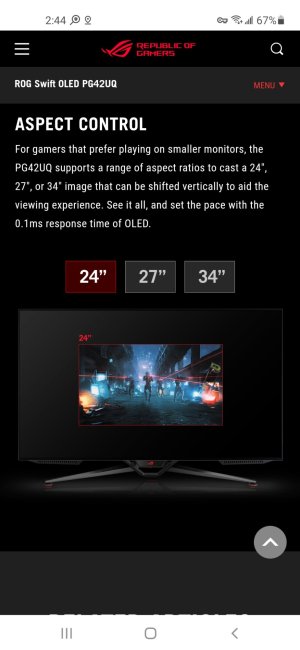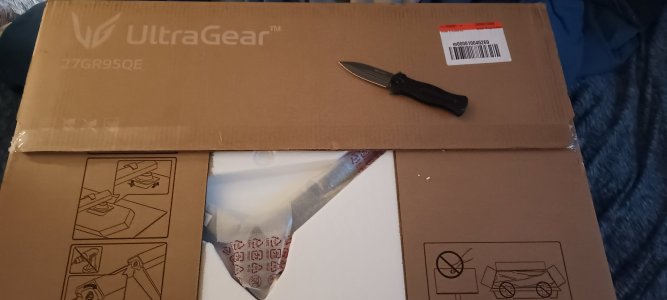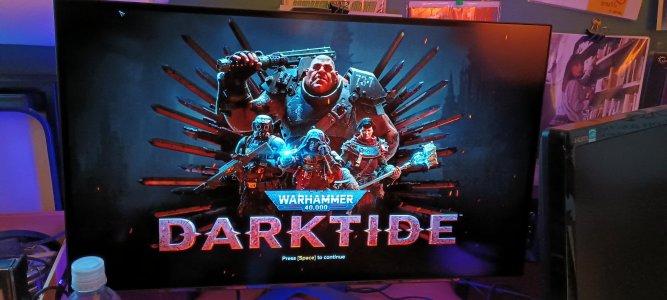Congrats! I hope you enjoy the monitor as much as I am. If you do have any issues, I've heard Best Buy has a pretty good return policy, so that should give you some comfort too.I did the deed and bought through Best Buy. I had my eye on Oled technology like 15 years ago ever since it was introduced like on Zune MP3 players.
I own a Samsung AMOLED S9 Phone which I no longer use but the screen on that is pretty amazing compred to LCD screens I used. I probably owned at least 18 different LCD screens ove the years none of them were good untill I got a Asus VA panel for gaming I use that screen today but not for general use cause it's too bright. Use a 21.5" Asus TN 60hz for general use and text and the monitor is from 2011 and have two backups.
I really, really tried to like two different 32" IPS panels before purchasing this one (one around the same price; the other much more expensive), and they both had too many compromises I just couldn't live with. I've still been learning about the panel, but I've liked it more and more the more I use it.
Has anyone tried HDMI 2.1 cable instead of DP? Watched a review about it so just wanted to get some more opinions on it.
I'm actually using an HDMI 2.1 cable right now, after having used DisplayPort the first week or so. I saw a review (don't remember who now...on YouTube tho') where they seemed to indicate gaming was better using HDMI (whatever they were doing, it seemed like the difference was dramatic), so out of curiosity I switched. Honestly, I haven't noticed a difference. Feels exactly the same in both, to be honest. I'm not sure if they had some weirdness with settings or what, or if their configuration was somehow different. That said, both DisplayPort and HDMI have worked equally well for me. I think HDMI 2.1 technically has more bandwidth, so I'll probably stick with it for now, but you should have a good experience with either.
By the way, I did have one small issue I forgot to mention here. Some games, when set to fullscreen native resolution (2560 x 1440) trigger a screen saying the monitor is not in it's native res (it thinks it thinks it's in 4K for whatever reason). There's just a warning that pops up on the bottom you can dismiss. It's not a big deal, but it can get annoying. There are two workarounds. You can play in 2560 x 1440 Windowed Fullscreen in most games, and it doesn't trigger, or there's a little software trick here that makes it go away permanently.
See this: https://www.reddit.com/r/Monitors/c...ed_27gr95qebaus_says_resolution_is_incorrect/
(The reply for CRU tells you what to do; you're basically just removing a few 4K TV resolutions from the computer's monitor profile).
It's a simple fix and does not modify the monitor at all; only how Windows sees it to prevent that from happening. (There's also a reset executable to undo any changes.) Seems like multiple LG monitors do this, so you'd think they'd be able to sort it out in firmware, but I guess it's been around a while for certain configurations. Has something to do with the 4K downscaling feature.
Last edited:
![[H]ard|Forum](/styles/hardforum/xenforo/logo_dark.png)


